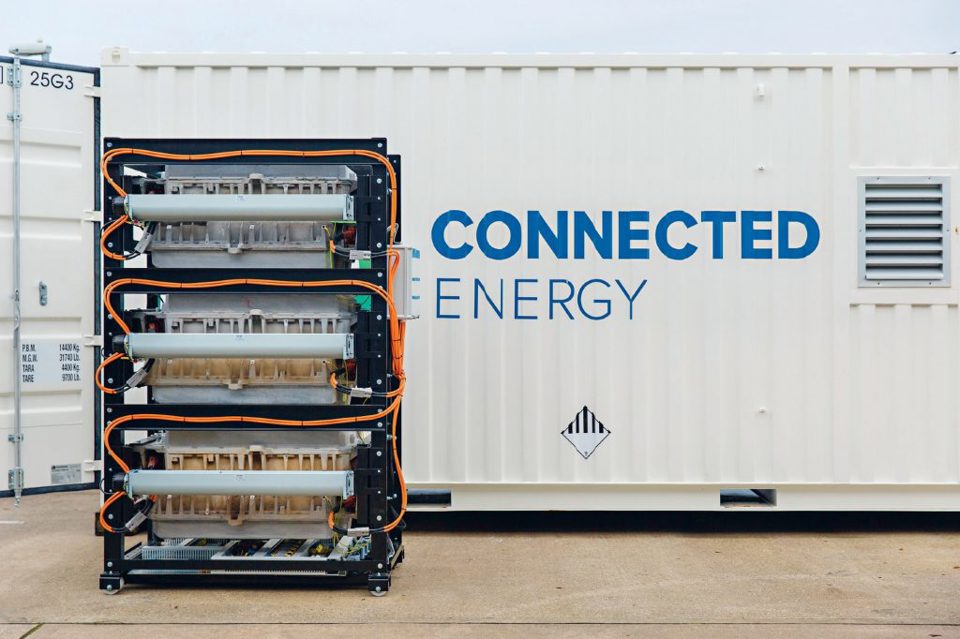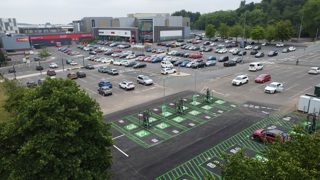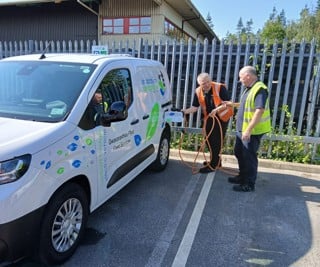A lack of capacity in the electricity grid is threatening the rollout of electric heavy goods vehicles (HGVs), according to research.
An electric truck requires up to 50 times the power of a typical charge point used to charge a car or a van. However, in most cases, the grid connection serving fleet operators, dealerships and service centres may not support this charging infrastructure, according to Connected Energy.
Nigel Dent, head of sales at the energy storage firm, said: “We have carried out extensive modelling for the HGV sector and the data shows that there will be challenges at many sites.
“In the majority of cases, the local grid simply could not support a high-capacity charger of 150 kilowatts, never mind a 350kW unit.”
He explained: “The industrial estates and business parks that are home to fleet depots, service centres and dealerships were naturally not built with these high-power demands in mind.
“But this could potentially cause delays to the roll-out of electric HGVs and add substantial, unanticipated costs to projects.”
In cases where the grid connection cannot support these chargers, the distribution network operator (DNO) can upgrade the local grid capacity. However, this is usually costly, comes with long lead times, and can be complex if the business involved rents rather than owns its premises, says Connected Energy.
It claims that a quicker and more affordable alternative is adding energy storage to bridge the power gap.
A battery energy storage system (BESS) acts like a reservoir, trickle charging during quiet periods, then releasing large amounts of energy as required. This can power truck and bus charge points without the need for a DNO upgrade.
“A BESS is a good way to deliver high-capacity charging on grid constrained sites,” continued Dent.
“Deploying energy storage systems is going to become the best way to support truck electrification in many instances, as it ensures that depots and service centres get the charging infrastructure they need at the most affordable price.”
A BESS can also help further decarbonise fleet operations when it works in tandem with on-site solar. The system can store surplus solar energy generated from rooftop arrays or canopies, ensuring that electric trucks use less electricity from the grid.
“There are also opportunities to use your BESS to generate additional revenue, meaning it can deliver a healthy ROI,” said Dent.
“New initiatives like the National Grid’s Demand Flexibility Service actually pay businesses for reducing their energy consumption during peak periods when demand on our grid is at its highest.
“A BESS can help you participate in these schemes, generating an estimated £15,000 - £20,000 a year in extra income.”
The grid capacity concerns from Connected Energy come after Relode announced it is developing a UK-wide network of gigawatt-scale Power Parks, which will include electric HGV charging hubs.
The specialist electricity infrastructure developer aims to open-up gigawatt-scale grid connections at approximately 15 sites.
Each Power Park will feature a substation and associated cabling to bring electricity to the site, plus an electric HGV charging hub offering a combination of rapid and overnight charging for 50-plus vehicles.
Connected Energy has recently developed an online calculator tool to help organisations assess whether battery energy storage is right for an EV charging site.






















martinwinlow - 23/07/2024 12:25
I do not deny that BESS' are a very obvious way to get around power-constrained depots where heavy EVs need charging (the same applies to *any* site needing a lot of power for any purpose), but many sites will not require such power given that their vehicles are parked up overnight and will be able to charge quite capably from a more conventional industrial (3 phase) supply. Having a large BESS on site also makes the idea of then clarting the depo's building's roofs in PV something of a no-brainer.